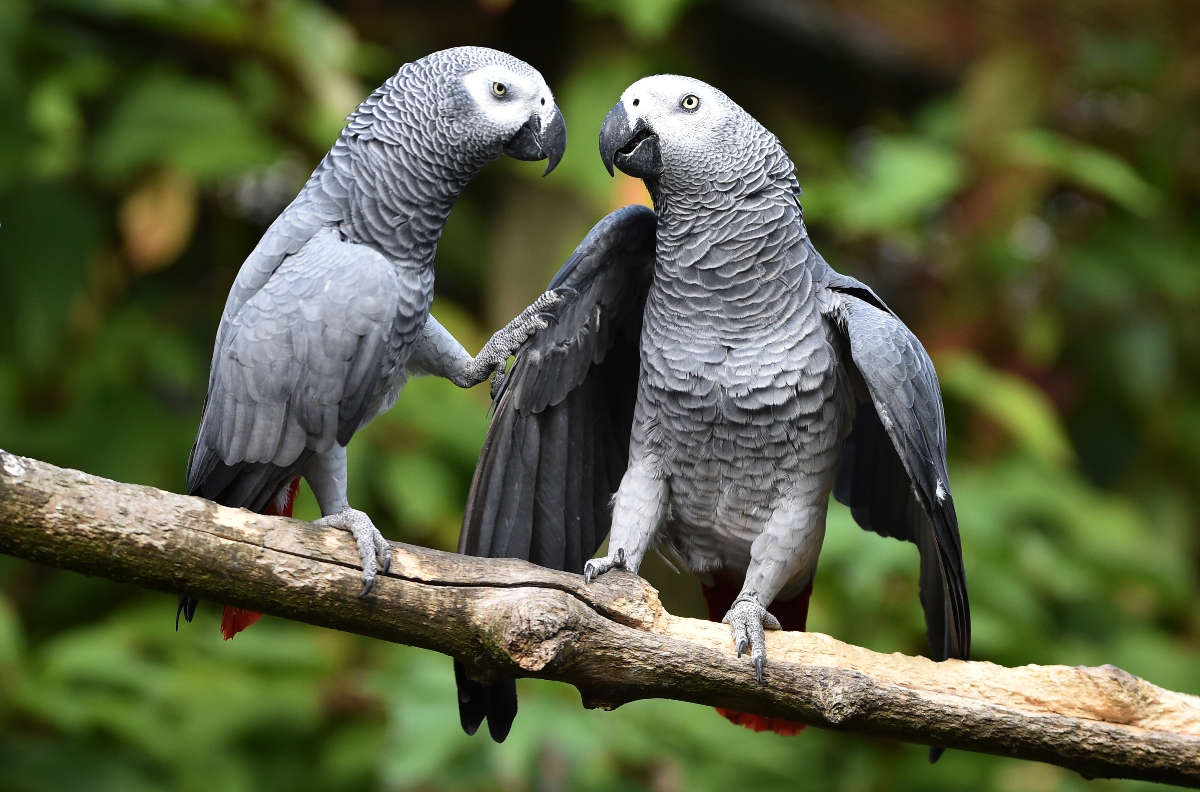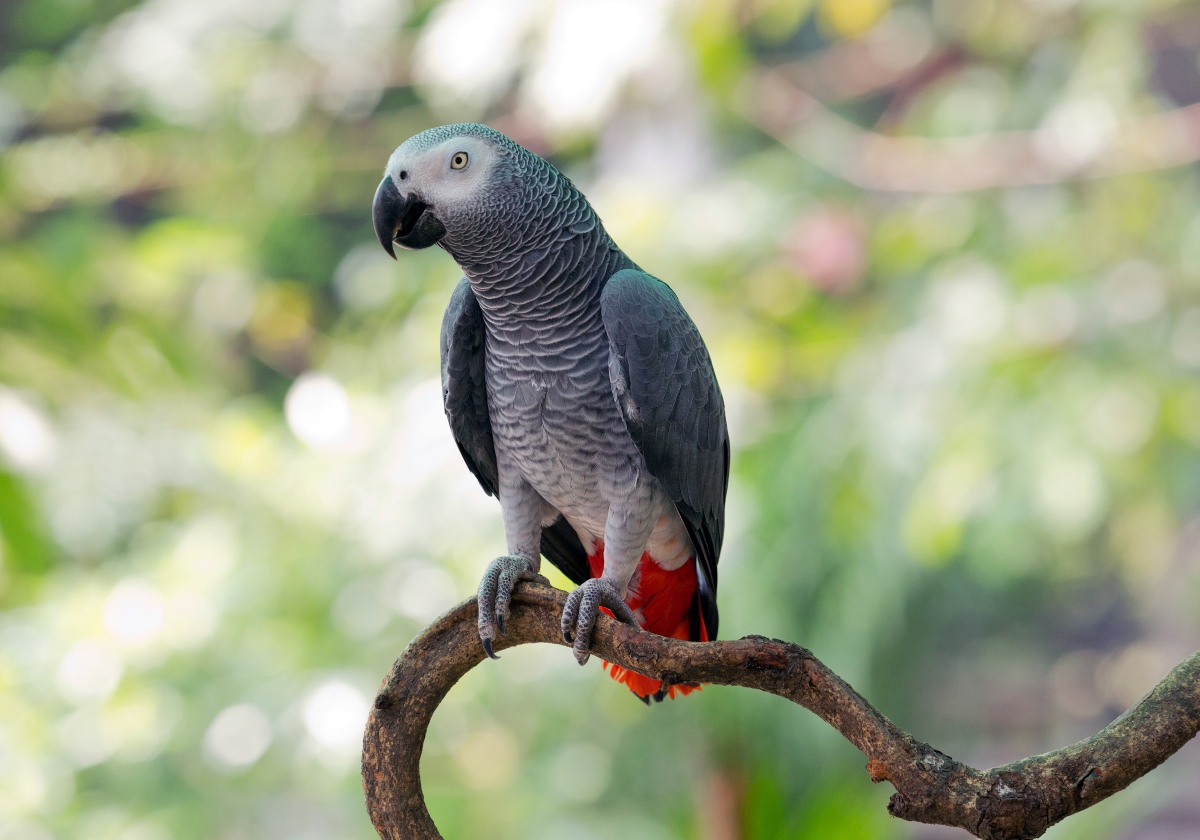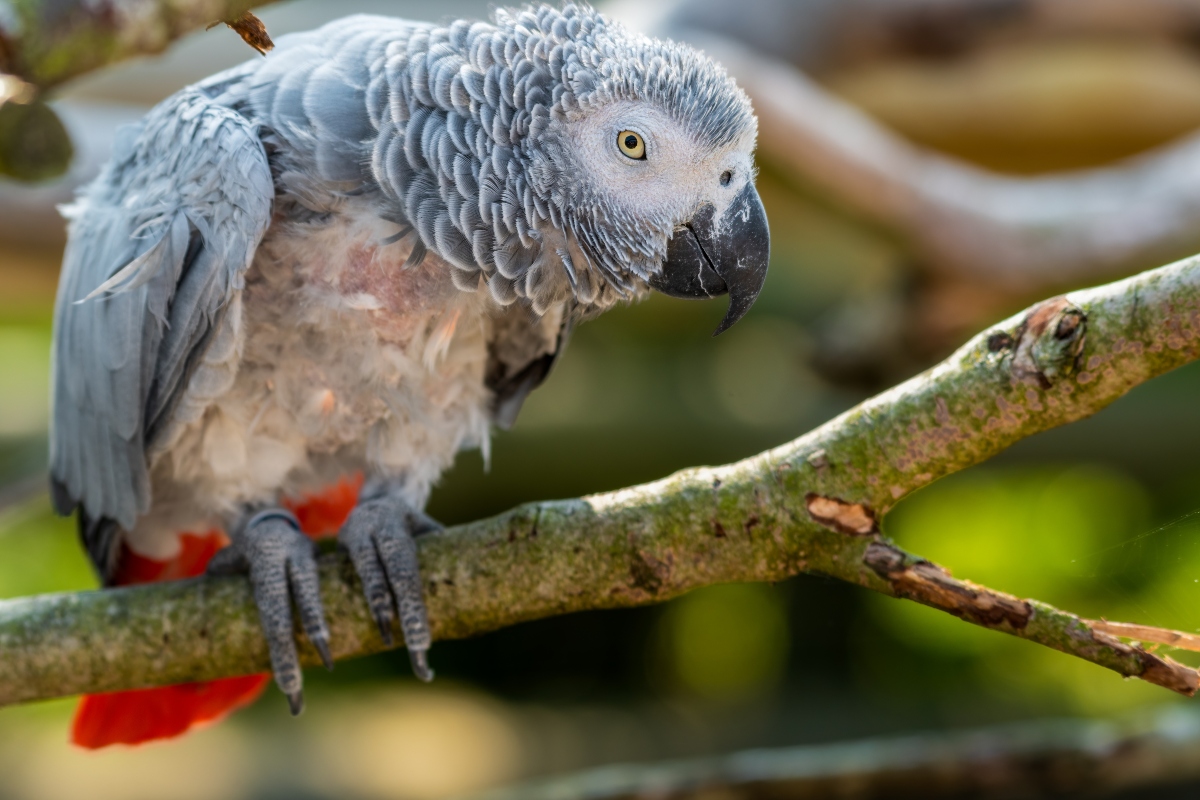With a notable reputation for its intelligence and speech abilities, the African Grey Parrot, scientifically named Psittacus erithacus, stands out among the avian world. This medium-sized parrot, adorned with a strikingly beautiful grey plumage, contrasted by a vividly red tail, has captured human attention and admiration for centuries.

Native to the dense rainforests of West and Central Africa, African Greys have a broad distribution, navigating through the forest canopies of countries like Ivory Coast, Ghana, and the Democratic Republic of Congo. Their habitats are characterized by lush vegetation, providing ample food resources such as fruits, nuts, and seeds, which constitute a significant portion of their diet in the wild.
One cannot discuss African Grey Parrots without highlighting their astonishing cognitive abilities. Known to be one of the most intelligent bird species, they can mimic a wide array of sounds, including human speech, with incredible accuracy. But their intelligence isn’t restricted to mere mimicry; African Greys demonstrate problem-solving skills and are even known to comprehend causal relationships, a trait quite rare in the animal kingdom.

Social by nature, African Greys in the wild congregate in flocks and form monogamous pairs during breeding seasons. The nesting female will lay between 3 to 5 eggs, which are diligently incubated for about a month. Once the chicks hatch, both parents take part in nourishing and safeguarding their young.
Despite their awe-inspiring intellect and wide recognition, African Grey Parrots face significant threats in their natural habitats. Deforestation and the illegal pet trade have substantially impacted their populations, landing them on the IUCN Red List as a species classified as Endangered. These threats underscore the importance of conservation efforts and international cooperation to protect and preserve their populations in the wild.

African Grey Parrots remain not only a symbol of the rich biodiversity found within the African rainforests but also a continual source of fascination in understanding avian intelligence and cognition. Their presence both in the wild and human homes prompts intriguing questions about animal intelligence, communication, and the depths of our interconnectedness with the myriad of species with whom we share our planet.